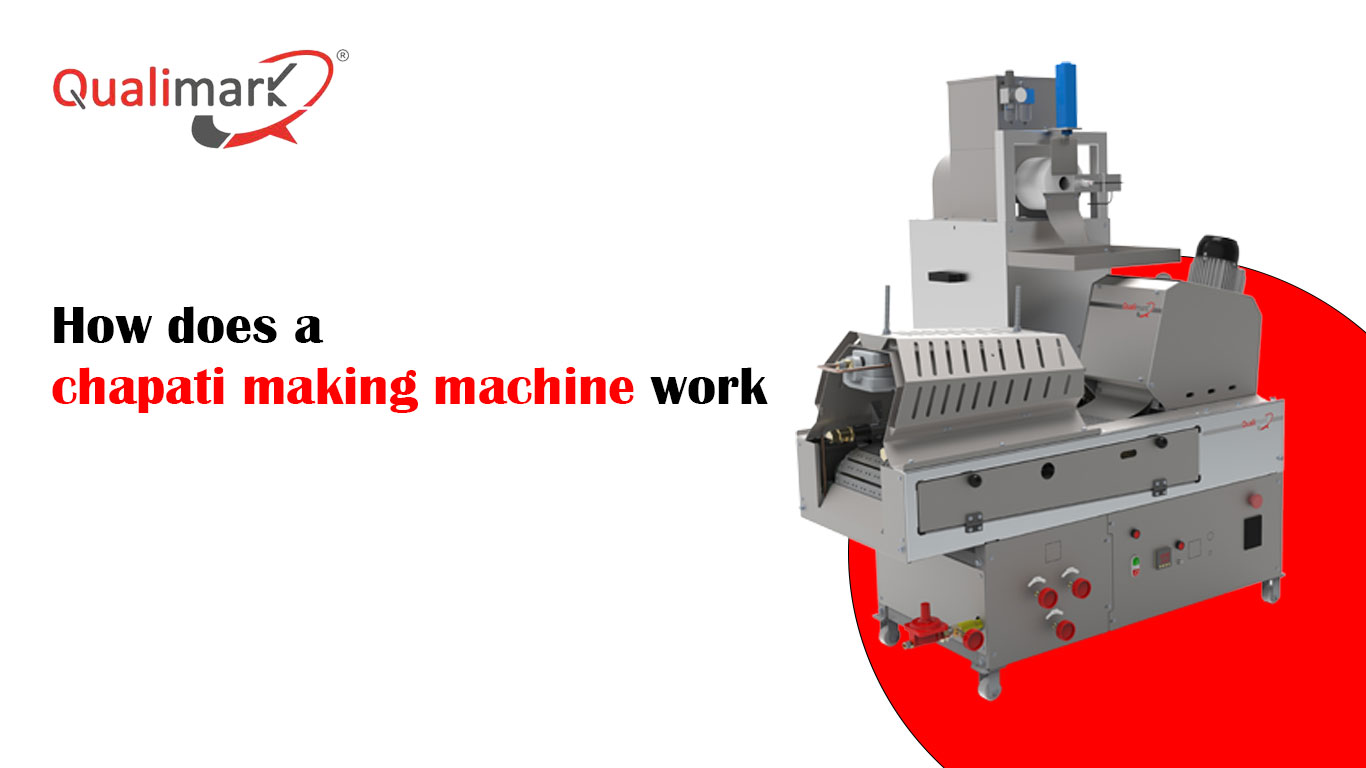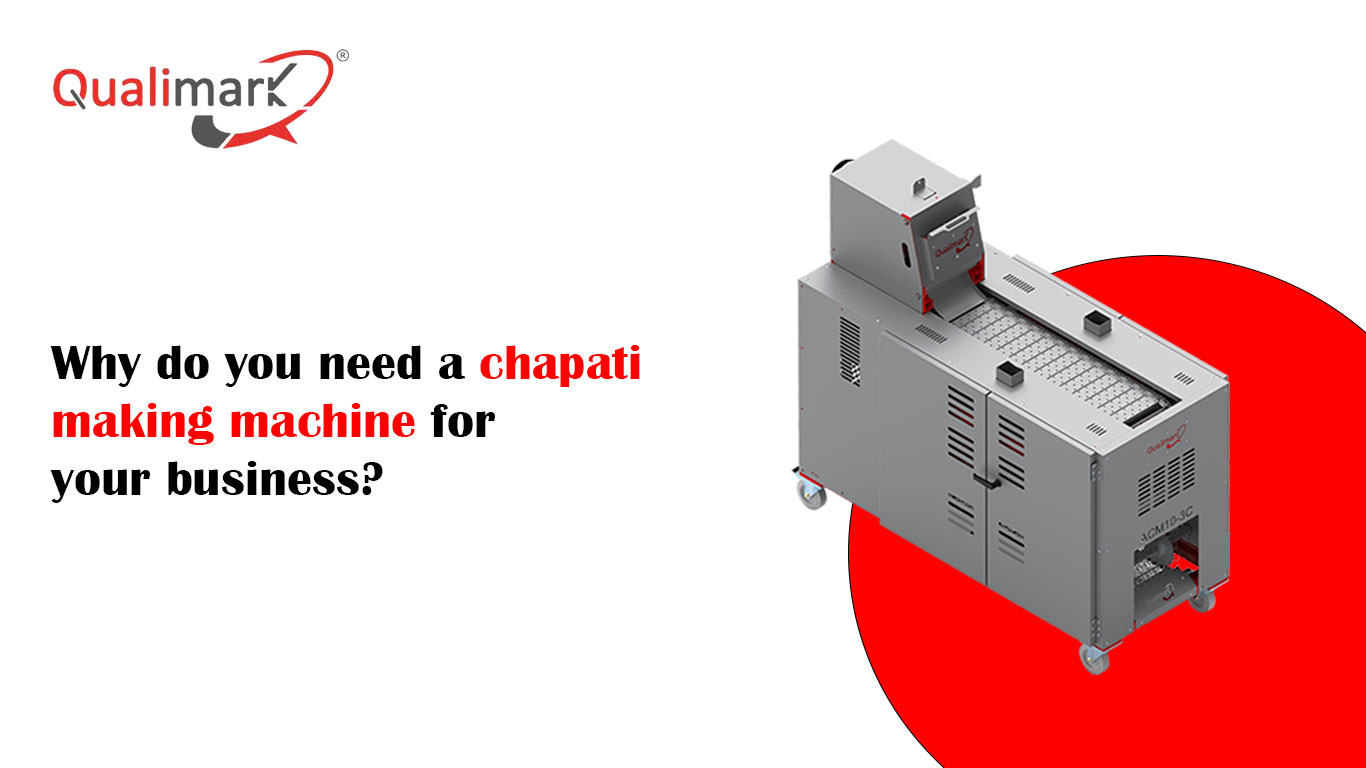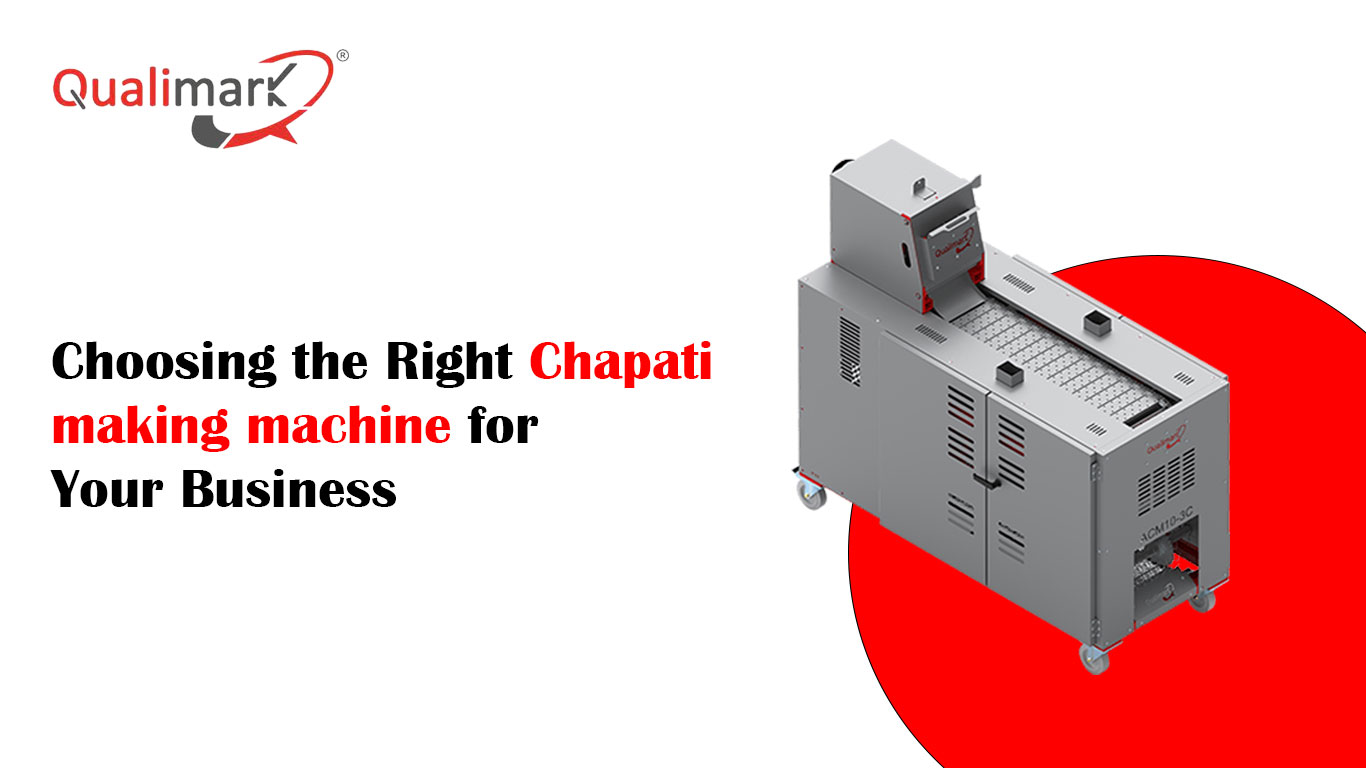Chapati making machines, also known as roti making machines or flatbread making machines, are innovative pieces of equipment designed to automate the process of chapati production. Smallest chapati making machine India made by Qualimark are widely used in commercial kitchens, restaurants, catering services, and food production facilities.
Steps involved in working of a Chapati Making Machine
Here’s a closer look at chapati making machines –
Dough Preparation
Chapati making machines start by preparing the dough, a crucial step in chapati production. These machines typically have a dough mixing unit where ingredients like wheat flour, water, and sometimes oil are accurately measured and mixed to create a consistent dough. This dough is then divided into equal-sized portions.
Dough Ball Formation
Once the dough is ready, the machine shapes it into uniformly sized dough balls. This ensures that each chapati will be of the same size and weight, which is important for consistent cooking.
Rolling and Flattening
After dough ball formation, chapati making machines automatically roll and flatten the dough balls into round, thin chapati discs. The thickness and diameter of the chapatis can often be adjusted based on customer preferences.
Cooking
Industrial chapati making machine India use heated plates or conveyor belts to cook the chapatis. The cooking temperature and time are carefully controlled to ensure even cooking and the right level of browning. Some machines have multiple cooking stages to ensure uniform cooking on both sides of the chapati.
Flipping and Stacking
To ensure even cooking on both sides, many chapati making machines are equipped with mechanisms for flipping the chapatis during the cooking process. Cooked chapatis are then stacked automatically, ready for collection.
Customization Options
Many chapati making machines offer customization options, allowing businesses to adjust parameters such as chapati size, thickness, cooking time, and temperature to meet specific customer requirements.
High Production Capacity
One of the primary advantages of chapati making machines is their ability to produce a large quantity of chapatis in a relatively short amount of time. This high production capacity is essential for businesses serving a large number of customers.
Consistency in Quality
Automated machines ensure uniform size, thickness, and cooking of chapatis, resulting in consistent quality across every piece. This consistency is crucial for maintaining customer satisfaction and building a reputable brand.
Hygiene and Sanitation
Chapati making machines are typically designed with hygiene in mind. They are easier to clean and maintain, reducing the risk of contamination. This is essential for food safety and compliance with health regulations.
Labor Savings
By automating the chapati production process, businesses can significantly reduce their reliance on manual labor. This not only saves labor costs but also minimizes the need for additional personnel.
Energy Efficiency
Some modern chapati making machines are designed to be energy-efficient, which can lead to cost savings over time. In summary, chapati making machines have become invaluable tools for businesses in the food industry, offering numerous benefits such as increased production capacity, consistency in quality, labor savings, and improved hygiene. These machines simplify the chapati-making process and ensure that businesses can meet high demand efficiently and consistently.



